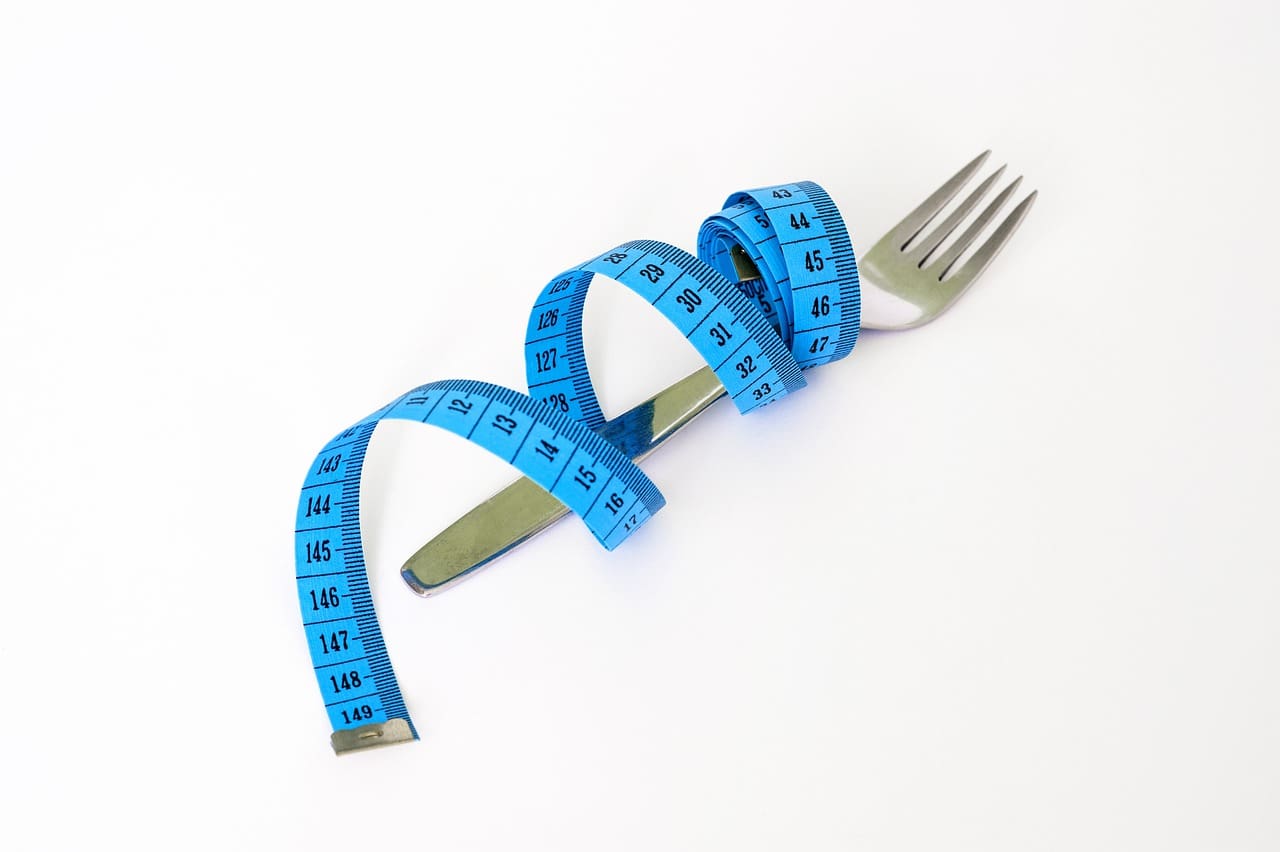The journey to successful weight loss is often challenging, but the real test lies in maintaining the results over the long term. Many people struggle with weight regain after achieving their initial weight loss goals. However, by implementing key strategies and adopting healthy habits, you can increase your chances of maintaining your weight loss and achieving lasting success.
One of the most crucial aspects of weight loss maintenance is creating a sustainable diet plan. It’s important to develop a balanced and flexible eating plan that supports your weight loss goals while still allowing for enjoyment. This means incorporating a variety of nutrient-dense foods, including fruits, vegetables, lean proteins, and whole grains. It’s also essential to practice portion control and mindful eating, paying attention to hunger and fullness cues.
In addition to a healthy diet, regular physical activity is paramount in maintaining weight loss. Engaging in regular exercise not only helps burn calories but also boosts metabolism and improves overall fitness. Finding physical activities that you enjoy and can stick to in the long term is key. Whether it’s walking, cycling, swimming, or dancing, the key is to make exercise fun and rewarding. Set realistic fitness goals that keep you motivated and challenge you to continue pushing yourself.
Building a supportive environment is another crucial factor in weight loss maintenance. Surrounding yourself with positive influences and supportive individuals can greatly impact your journey. Seek out friends, family members, or even online communities who share similar goals and can provide encouragement and accountability. Creating a healthy home environment is also important. Stock your kitchen with nutritious foods, remove temptations, and make physical activity a regular part of your family’s routine.
Creating a Sustainable Diet Plan
Creating a sustainable diet plan is essential for long-term weight loss success. It’s not just about following a strict set of rules or depriving yourself of your favorite foods. Instead, it’s about developing a balanced and flexible approach that supports your weight loss goals while still allowing for enjoyment and flexibility.
One key aspect of creating a sustainable diet plan is focusing on balance. This means including a variety of nutrient-dense foods from all food groups in your meals and snacks. Aim to incorporate plenty of fruits, vegetables, whole grains, lean proteins, and healthy fats into your diet. This will ensure that you’re getting the essential nutrients your body needs while also helping you feel satisfied and energized.
Another important aspect is flexibility. It’s unrealistic to expect yourself to never indulge in your favorite treats or eat out at restaurants. Instead of completely cutting out these foods, find ways to enjoy them in moderation. For example, you could allow yourself a small portion of dessert once a week or choose healthier options when dining out, such as grilled chicken instead of fried.
Meal planning and preparation can also be incredibly helpful in creating a sustainable diet plan. Take the time to plan out your meals and snacks for the week, and then prepare them in advance. This will help you make healthier choices and avoid reaching for convenient, but often less nutritious, options when you’re hungry and pressed for time.
Additionally, it’s important to listen to your body’s hunger and fullness cues. Pay attention to when you’re truly hungry and when you’re satisfied. Eating mindfully and stopping when you’re full can help prevent overeating and promote a healthier relationship with food.
Remember, creating a sustainable diet plan is not about perfection. It’s about finding a balance that works for you and allows you to enjoy the journey towards your weight loss goals. By developing healthy habits and making gradual changes, you can create a diet plan that supports long-term success and overall well-being.
Incorporating Regular Physical Activity
Incorporating regular physical activity is crucial for maintaining weight loss and achieving long-term success. Not only does exercise help you burn calories, but it also boosts your metabolism and improves your overall health and well-being.
So, how can you make physical activity a regular part of your daily routine? Here are some effective strategies:
- Schedule it in: Treat exercise like any other important appointment and schedule it into your day. Whether it’s going for a walk during your lunch break or hitting the gym after work, make it a priority.
- Find activities you enjoy: The key to sticking with exercise is finding activities that you actually enjoy. Whether it’s dancing, hiking, swimming, or playing a sport, choose activities that make you happy and keep you motivated.
- Start small and gradually increase: If you’re new to exercise or have been inactive for a while, start with shorter sessions and gradually increase the duration and intensity. This will help prevent injury and make it easier to stick with your routine.
- Mix it up: Don’t be afraid to try different types of exercise to keep things interesting. Incorporate a variety of activities such as cardio, strength training, and flexibility exercises to work different muscle groups and keep your body challenged.
- Make it social: Exercising with a friend or joining a group class can make it more enjoyable and help you stay accountable. Plus, it’s a great way to socialize and meet new people who share similar interests.
Remember, the key to incorporating regular physical activity is to find what works best for you and make it a sustainable part of your lifestyle. Whether it’s going for a run, taking a yoga class, or simply going for a walk, find activities that you love and make them a priority. By making exercise a regular habit, you’ll not only maintain your weight loss but also improve your overall health and well-being.
Finding Activities You Enjoy
Finding activities that you enjoy is crucial for maintaining weight loss in the long term. When you engage in physical activities that you genuinely enjoy, exercise becomes a fun and rewarding part of your weight loss maintenance journey. It no longer feels like a chore, but rather something you look forward to.
There are various types of physical activities that you can explore and incorporate into your routine. It’s important to try different activities and find what works best for you. Some options to consider include:
- Walking or jogging in nature: Take advantage of the great outdoors and enjoy a scenic walk or jog in a park or on a trail.
- Dancing: Join a dance class or simply put on your favorite music and dance around in your living room. It’s a great way to get moving and have fun.
- Swimming: If you enjoy being in the water, swimming is an excellent low-impact exercise that works your entire body.
- Group classes: Sign up for group fitness classes such as yoga, Pilates, or Zumba. These classes not only provide a structured workout but also offer a social aspect.
- Sports: Consider joining a recreational sports league or playing sports with friends. Sports like basketball, tennis, or soccer can be a great way to stay active while having fun.
Remember, the key is to find activities that you genuinely enjoy and can stick to in the long term. Don’t be afraid to try new things and step out of your comfort zone. By making exercise enjoyable, you’ll be more likely to stay consistent and maintain your weight loss successfully.
Setting Realistic Goals
Setting realistic goals is a crucial aspect of maintaining weight loss and staying motivated on your fitness journey. When it comes to achieving long-term success, it’s essential to set goals that are achievable and realistic for your individual circumstances. This not only helps you stay motivated but also ensures that you can maintain your weight loss over time.
So, how can you set achievable and realistic fitness goals? Here are some tips to guide you:
- Be specific: Instead of setting a vague goal like “lose weight,” be specific about how much weight you want to lose and in what timeframe. For example, aim to lose 10 pounds in the next three months.
- Make it measurable: Set goals that can be measured so that you can track your progress. This could include tracking the number of workouts you complete each week or the number of inches you lose from your waistline.
- Set a realistic timeline: Give yourself enough time to achieve your goals without feeling overwhelmed. Losing weight too quickly can be unsustainable and may lead to regaining the weight later on.
- Break it down: Instead of focusing solely on the end goal, break it down into smaller, more manageable milestones. Celebrate each milestone you achieve along the way, as this will help keep you motivated.
- Consider your lifestyle: Take into account your daily routine, commitments, and personal preferences when setting your goals. It’s important to set goals that are realistic and align with your lifestyle to increase your chances of success.
Remember, setting realistic goals is not about limiting yourself or settling for less. It’s about being practical and setting yourself up for long-term success. By setting achievable goals, you’ll stay motivated, maintain your weight loss, and continue to progress on your fitness journey.
Building a Supportive Environment
Building a supportive environment is crucial for maintaining weight loss and achieving long-term success. When you have a network of support, it becomes easier to stay on track and overcome challenges along the way. Here are some strategies to help you build a supportive environment:
- Surround Yourself with Positive Influences: Surrounding yourself with positive and supportive individuals can greatly impact your weight loss maintenance journey. Seek out friends, family members, or even online communities who share similar goals and can provide encouragement and motivation.
- Create a Healthy Home Environment: Your home environment plays a significant role in your ability to maintain weight loss. Make sure your kitchen is stocked with healthy food options and remove any tempting or unhealthy snacks. Consider setting up a designated exercise area at home to make it easier to incorporate physical activity into your daily routine.
By surrounding yourself with positive influences and creating a healthy home environment, you are setting yourself up for success in maintaining your weight loss. Remember, a supportive environment can make all the difference in staying on track and achieving your long-term goals.
Surrounding Yourself with Positive Influences
Discover how surrounding yourself with positive and supportive individuals can greatly impact your weight loss maintenance journey, and learn tips for finding and nurturing these relationships.
When it comes to maintaining weight loss, the people you surround yourself with can play a crucial role. Positive influences can provide the support and motivation you need to stay on track and make healthy choices. On the other hand, negative influences can hinder your progress and make it harder to maintain your weight loss goals. So, how can you surround yourself with positive influences? Here are some tips to help you find and nurture relationships that will support your weight loss maintenance journey:
- Join a Support Group: Consider joining a weight loss support group or online community where you can connect with others who are on a similar journey. These groups can provide a safe space to share your challenges, celebrate your successes, and gain valuable insights from others who have been through the same experience.
- Find a Workout Buddy: Exercising with a friend or partner can make your workouts more enjoyable and help you stay accountable. Look for someone who shares your fitness goals and is committed to maintaining a healthy lifestyle. Together, you can motivate each other and push each other to reach new heights.
- Surround Yourself with Positive Role Models: Seek out individuals who have successfully maintained their weight loss and ask them for advice and guidance. Their experiences and strategies can provide valuable insights and inspiration. Additionally, consider following social media accounts or blogs of people who promote a healthy lifestyle and share valuable tips and tricks.
Remember, building a supportive network takes time and effort. Be patient and open-minded as you seek out positive influences. Surrounding yourself with people who believe in your goals and support your journey can make a world of difference in your weight loss maintenance efforts.
Creating a Healthy Home Environment
Creating a healthy home environment is crucial for maintaining weight loss and making healthy choices. By setting up your home in a way that promotes healthy eating and physical activity, you can make it easier to stay on track with your weight loss goals.
One way to create a healthy home environment is to stock your kitchen with nutritious foods. Fill your pantry and refrigerator with fresh fruits and vegetables, lean proteins, whole grains, and healthy snacks. This will make it easier to make healthy choices when you’re hungry and reduce the temptation to reach for unhealthy options.
In addition to stocking your kitchen with healthy foods, it’s important to organize your pantry and refrigerator in a way that makes healthy options easily accessible. Keep fruits and vegetables at eye level and within reach, while placing less healthy foods in harder-to-reach places. This simple rearrangement can make a big difference in your food choices.
Another way to promote a healthy home environment is to create opportunities for physical activity. Set up a designated exercise space in your home, whether it’s a small corner with a yoga mat or a home gym with exercise equipment. Having a dedicated space for exercise can make it more convenient and enjoyable to incorporate physical activity into your daily routine.
You can also make physical activity a family affair by involving your loved ones. Plan active outings or activities that everyone can enjoy together, such as hiking, biking, or playing sports. By making exercise a fun and social activity, you’re more likely to stick with it and maintain your weight loss.
Lastly, consider creating a visual reminder of your weight loss goals in your home. This could be a vision board, a motivational quote, or a before-and-after picture that serves as a constant reminder of why you started your weight loss journey. Having a visual reminder can help keep you motivated and focused on your goals.
In conclusion, creating a healthy home environment is essential for maintaining weight loss and making healthy choices. By stocking your kitchen with nutritious foods, organizing your pantry and refrigerator, creating opportunities for physical activity, involving your loved ones, and having a visual reminder of your goals, you can set yourself up for long-term success in maintaining your weight loss.
Frequently Asked Questions
- How can I create a sustainable diet plan?
To create a sustainable diet plan, it is important to focus on balance and flexibility. Include a variety of nutrient-dense foods such as fruits, vegetables, whole grains, lean proteins, and healthy fats. Avoid strict diets or extreme restrictions, as they are difficult to maintain in the long term. Allow yourself occasional treats or indulgences to avoid feelings of deprivation.
- Why is regular physical activity important for weight loss maintenance?
Regular physical activity not only helps burn calories but also supports overall health and well-being. It helps maintain muscle mass, boosts metabolism, reduces stress, and improves mood. Aim for at least 150 minutes of moderate-intensity aerobic activity or 75 minutes of vigorous-intensity activity per week, along with strength training exercises twice a week.
- How can I find physical activities that I enjoy?
Experiment with different types of physical activities such as walking, cycling, dancing, swimming, or playing a sport. Find activities that you genuinely enjoy and that fit into your lifestyle. Consider joining fitness classes or groups to make exercise more social and fun. Remember, staying active doesn’t have to feel like a chore.
- What are some tips for setting realistic fitness goals?
When setting fitness goals, it is important to be realistic and specific. Start by identifying what you want to achieve and break it down into smaller, achievable milestones. Set goals that are measurable and time-bound. Celebrate your progress along the way and adjust your goals as needed. Remember, slow and steady progress is more sustainable than drastic changes.
- How can a supportive environment help with weight loss maintenance?
A supportive environment plays a crucial role in maintaining weight loss. Surround yourself with positive influences who encourage and motivate you. Seek out friends, family, or support groups who share similar goals. Create a home environment that promotes healthy eating by keeping nutritious foods readily available and minimizing temptations. Make physical activity a priority by scheduling it into your daily routine.
- How can I find and nurture positive relationships during my weight loss journey?
Building positive relationships during your weight loss journey can provide invaluable support. Seek out like-minded individuals through fitness classes, online communities, or local groups. Share your goals and challenges with them, and offer support in return. Surrounding yourself with people who understand and support your journey can greatly increase your chances of success.
- What are some ways to create a healthy home environment?
To create a healthy home environment, start by stocking your kitchen with nutritious foods such as fresh fruits, vegetables, whole grains, and lean proteins. Avoid keeping unhealthy snacks or sugary drinks easily accessible. Plan and prepare meals in advance to avoid relying on unhealthy takeout or convenience foods. Make physical activity a family affair by engaging in active hobbies or outings together.








Leave a Reply